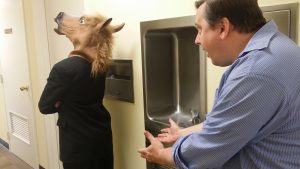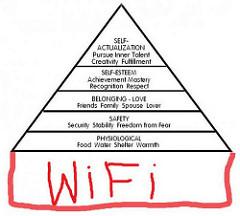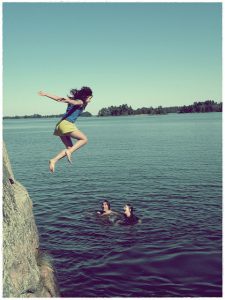Today, I launched a new assessment approach in my academic Math 10 and Physics 12 classes: collaborative quizzing.
I had my traditional quizzes ready to go but I had students pair up to do the quiz together. Admittedly, I have not counted quizzes for marks for almost 10 years. When Assessment for Learning approaches came to BC, we were instructed to not penalize students for practicing. Although extreme advocates for AFL interpreted this mantra as necessitating the elimination of due dates and late penalties, I personally found that this modification increased stress levels and dropped performance levels of my students. I did, however, eliminate quizzes that lowered overall grades, then quickly eliminated all quiz scores from my gradebook. Overall, students appreciate having quizzes represent a snapshot of their present knowledge, yet also not contribute to lowering their grades. Consequently, making the leap into a collaborative model, was more like a step for me.
Throughout my Masters’ journey, I have read about the merits of collaboration and social construction of learning. And although students will simply have a unit test and final exam as their solo flight assessments, my gut is telling me that this is the way to go. My main concern is for the students who are struggling with the material— how can I provide opportunities for them to increase their conceptual understanding within my short time with them in class? Students can self-quiz themselves, outside of class, should this practice be needed, whereas this collaboration time may not be as easily accessed, once the bell rings at the end of class.
Today, I had phones brought to the chalkboard or I witnessed them being stowed into backpacks. Each pair had their own quiz, along with a table top whiteboard, to get ideas out in the open. Some groups worked solo and only conversed occasionally. Other groups talked about every question in detail. When a group was unsure, I guided their understanding and sent other groups to help, when I was busy. Potentially, in this model, students harbouring misconceptions will have their issues resolved right away! I also had each student input their final answers into a Response System, so that I could gauge where everyone was at, at the end of the process, and review any questions with the class that proved to be challenging. Tomorrow, I will poll the classes to see how they felt this approach went.
If I was the student, who was not entirely sure about the concepts, I would have very much appreciated this style of non-stressful, non-punitive, low-anxiety collaborative assessment.
I am more than curious to see what they will say! …stay tuned!
Update On Post: Here is a link to the Google Spreadsheet summarizing the students’ responses from my Collaborative Quiz Survey.
March 12 Update: After absorbing the comments from the survey, I decided to allow individuals the choice of “going solo” on their quiz. Although, I tried to convince them of the merits of teaching others (being the MKO), a few students still preferred to be take on the “lone wolf” approach to their learning. The students who have fallen into this lone wolf category tend to either be on their own in class usually or are very capable students who typically are able to resolve their issues on their own. By far, the vast majority of students are fully using or partially using this time as an opportunity to work together on questions. Seeing my “strugglers” make full use of their time during a time that would otherwise be spent doodling on the back of the quiz, is reason enough to make me want to continue this assessment technique. I now have students hand in corrected quizzes that count toward Practice Work (Homework) marks. Students mark their own and are responsible for making their own corrections. Work MUST be shown and absent students can get the answer key from the Google Classroom. This process is a home run as far as I am concerned!





